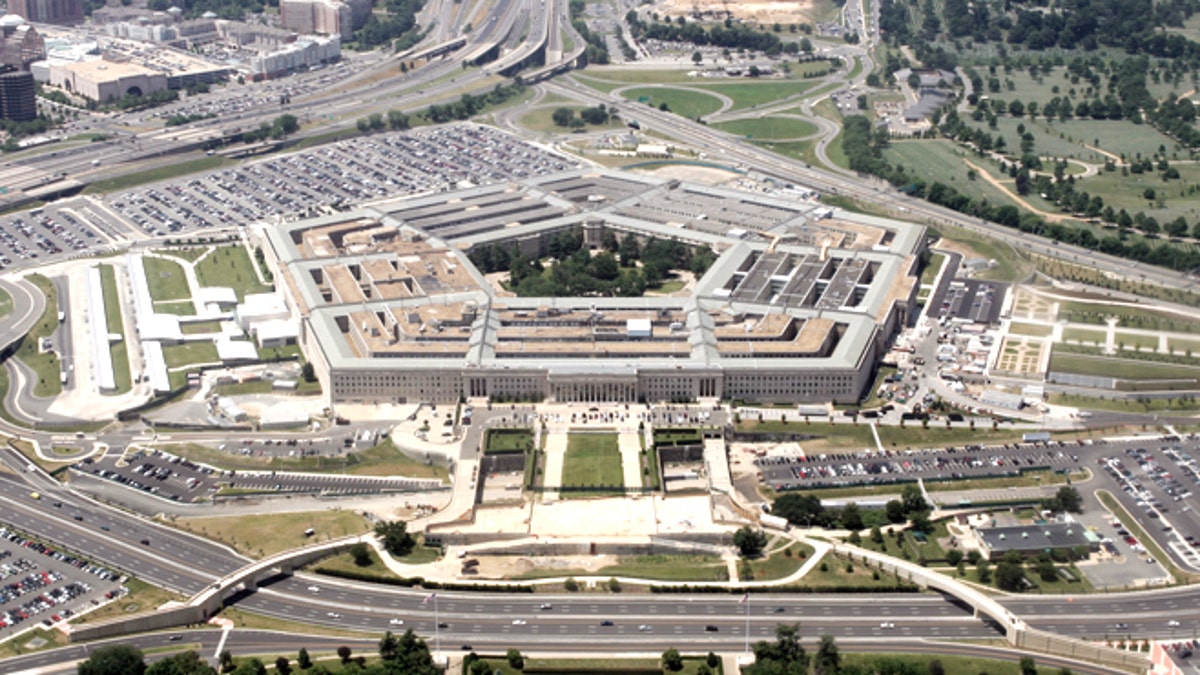
An aerial view of the Pentagon building in Washington. (Reuters)
“All warfare is based on deception.” -- Sun Tzu
However, self-deception is not useful or desired…and yet that is what we see coming out of the Pentagon – a willful blindness on the need to reform and perform. And the mixed messages coming out of the Pentagon regarding readiness and the budget appear to me to be a symptom of self-deception.
General Ray Odierno, the Army Chief of Staff, on October 23 stated: “Right now, we have in the Army two brigades that are trained. That is it. Two.”
A statement that is too cute by half is simply not true. Odienro later clarified his statement saying that the army has “more than just two brigades” ready – but his comment had the desired effect, and if you do an Internet search on “Odierno two brigades” you’ll see that dozens of news outlets picked up Odierno's remarks and ran them with this erroneous initial comment. You'll also see that and virtually none of them covered Odierno’s correction.
[pullquote]
This outlandish statement by Odeirno had the secondary effect of potentially creating a perception that there is real material weakness in our military. Simply put, it is not true.
Army units maintain readiness “standards” and commanders are judged by their ability to maintain readiness and report the same via a process known as the Unit Status Report (USR). We’ve not heard about any mass firing of unit commanders for their failure to meet readiness standards.
Comments such as these could project incompetence and weakness within our military capability and bolster terrorist propaganda.
There are those adversaries out there, such as North Korea and Iran to name two, who might actually believe this nonsense, and act on the belief, rather than the reality, we know to be true.
Retention by the U.S. of credible military force was necessary to ending the Cold War – it remains true today. Statements like those by General Oderino tend to project an inaccurate picture of our military – and its capability.
Anyone who has served in the military understands that there are various states of training and readiness in all units. There are readiness cycles for units to go through, and when a unit is designated to deploy there is a period of training; that training is tailored to the threat environment to which they will deploy.
We only have a handful of “rapid deployment” units that can go anywhere at any time that are ready for combat 24/7.
This has been the standard since the 1980s – cycles of readiness. Therefore, what General Odierno says regarding the training of units is not only without merit, it is detached from the reality of how the Army does business.
There are now the “modular brigades” that are tailored to the specific mission requirements, and allow for adaptation to the threat and environment. The Army has developed doctrine around this operational philosophy.
General Oderno’s comments are part of a larger pattern. Recent testimony by all Pentagon senior leaders has been an irrational, ill-advised defense of the status quo that is projecting an image of weakness where no weakness exists.
There is opportunity in any challenge. Now, Pentagon leaders have before them the ultimate task and challenge – to take the "Rubiks cube" of Pentagon waste, inefficiency and an out of date Cold War infrastructure and do actual work to make it into something that is streamlined, efficient and effective.
This is not an easy task – and from their recent testimony we have a military that is unable to perform is primary missions.
I would argue that such erroneous testimony calls into question their own competence. Real leadership, in this instance, demands we begin the work of making DoD more effective and modern, not more redundant and focused on non-existent threats of a past era.
The current leadership science fictionalizes the threats to this nation, and then uses this fiction in place of a reality-based threat understanding.
We spend more on defense than any other nation in the world. We spend more than the 13 nations, and most of those nations are allies.
We, in fact, have “layered” protection – some would say that layering is full of fat that needs to be cut.
We have yet to define the actual “threats” we are preparing to do combat with. Notably, no one asked General Odierno whom those combat ready brigades were being prepared to be used against. We need to ask – what are we actually ready to defend against? Space aliens? What is the threat we are actually prepared to defend against?
The answer for Congress is to ask better questions when presented with information that appears to be over the top or meant to evoke an emotional response.
We have a huge intellectual and technology advantage. We should focus on ways to maintain it and focus on how to anticipate the next major threat to national security, and not simply spend resources on past perceptions of threat.
So why do we have generals, who are given budgets at and beyond the size of the Cold War, now demanding more? Apparently we now have a Pentagon that is the protectors of its budget, not the nation...
There are real issues we need to examine and develop strategies to face them directly. There are: nuclear deterrence and missile defense; our tradition of ensuring open and free sea lanes and lines of communication; a robust counterterrorism capacity; a robust global “first responder” capacity; cyber and Electromagnetic Pulse (EMP) issues; and living up to treaty obligations.
None of these require the global Cold War infrastructure we now maintain and the generals insist we continue to fund; all of these require we adapt to the 21st century threats and abandon longing for a past era when things were perceived as less complex.
